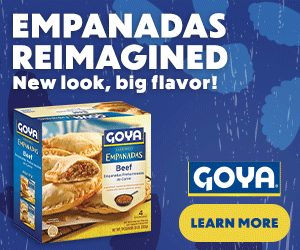by Cindy Sorensen/Founder and CEO of The Grocery Group
The Hispanic population represents the fastest-growing ethnic group in the U.S. In fact, by 2020, Hispanics will be the largest ethnic group. They currently represent 17 percent of the population and will grow to be 29 percent by 2050. This growth will occur in all regions and states in the country.
Hispanic buying power increased to $1.7 trillion in 2017, which is well over a 50 percent increase since 2010. A 2016 IRI HispanicLink study discovered that, on average, Hispanics spend 9 percent more per shopping trip than non-Hispanics.
Hispanic shoppers have many of the same purchase and consumption behaviors as non-Hispanic shoppers, but at a higher rate. One of the major differences in behavior is Hispanics are much more influenced by activities and merchandising during the in-store shopping experience. While sampling programs and cross-merchandising meal/snack solutions increase sales, Hispanics react to these activities at a greater rate than non-Hispanic shoppers.
Findings from a recent Hispanic consumer research report identified five shopping behaviors Hispanics participate in at a higher rate than non-Hispanics:
• They like to shop with others, and decisions are influenced by others joining the shopping experience, such as children and/or spouses.
• They conduct fewer pre-shopping activities preparing for the shopping trip, such as checking their pantry, searching for a recipe, clipping coupons or checking out a product online.
• They are spontaneous and impulsive in their purchase decisions.
• They are willing to try new products while in the store.
• They choose “fresh” over price.
These shoppers are not as brand loyal as non-Hispanics, but they value national brands over private label. In fact, 78 percent of Hispanic shoppers believe private label food items are equal to or not as good as national brands.
The study concluded that Hispanics are less likely to be driven by habit when making purchase decisions, so making the in-store experience interesting and relevant—through sampling programs and cross-merchandising—is key to retaining Hispanic shoppers in your store. In addition, regardless of their preferred language, they want access to Spanish translations in-store and on product packaging.
Underdeveloped market
Hispanics love dairy products, but the percentage of their purchases of milk, cheese and yogurt is underdeveloped vs. their percentage of the population. Closing this gap with such a large shopper base could be an upside for dairy sales overall.
Hispanic purchases represent the following percentages of dairy category sales:
• Milk—13 percent
• Cheese—12 percent
• Yogurt—12 percent
• Yogurt drinks—30 percent
• Ice cream—9 percent
While total milk category sales are down, Hispanic consumers increased their milk consumption and helped to lessen category declines. Hispanic moms have reached new heights advocating for milk, and there continues to be progress in the Hispanic market consumption metrics. The category growth has come from new users to the category and an increase in the daily amount of milk Hispanic moms are consuming. This is true category growth.
Hispanic moms believe in the healthfulness of milk, with 86 percent of Hispanic moms rating milk as very healthy. Only 66 percent of Hispanic moms rate milk alternatives as healthy.
Hispanic kids love milk, and it is being consumed primarily at home during breakfast. Sounds like a great idea for milk to be cross-merchandised with a breakfast meal solution center featuring cereal and other breakfast-related foods.
Make the connection
How might retailers connect with Hispanic shoppers? The suggestions below are really no different than what non-Hispanics shoppers say appeal to them. The difference is that Hispanics respond at a higher rate. Remember, they often shop together as a family, so appealing to all family members is important.
• Creating in-store experiences—These can include product sampling, cross-merchandising and new recipe ideas for families. Dairy products can be cross-merchandised throughout the store for meal/snack solutions such as milk with cereal/bakery/prepared foods and yogurt and cheese with produce.
• Utilizing in-store signage—Highlight new product introductions. Bilingual signage is recommended.
• Prepared foods—Consider an emphasis on fresh, Hispanic-inspired recipes.
Hispanic consumer research for this column was provided by a study conducted by Dairy West and Midwest Dairy Associations, two regional USDA dairy farmer-funded checkoff programs in the West and Midwest, and also by MilkPEP, the Milk Processor Education Program. Data sources include IRI and Latinum Hispanic Household Survey studies. For additional information or questions about this study, contact Dionne de Vallois at Dionne.deVallois@
sociedad.com (MilkPEP) or Jenn Nelson at [email protected].
Cindy Sorensen is the founder and CEO of The Grocery Group, which focuses on developing leadership in the grocery industry. The Grocery Group’s expertise is in developing innovation in merchandising, category management, distribution and promotion strategy, and digital and website development. The Group also is working with the industry and colleges and universities to attract, recruit and retain a talented workforce in a competitive employment market. Working with manufacturers and food startups to develop products to fulfill changing consumer demands also is of special interest to The Grocery Group. Reach Cindy at cindy@
thegrocerygroup.com.
Keep reading:
https://www.theshelbyreport.com/2018/07/10/cindy-sorensen-give-milk-a-level-playing-field/


